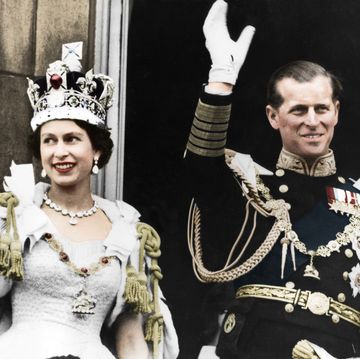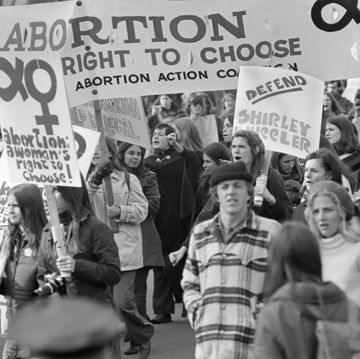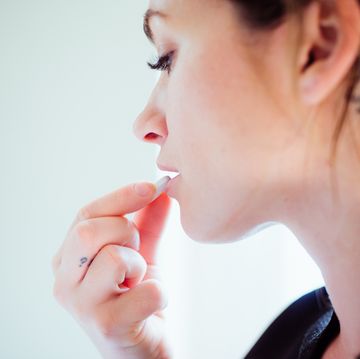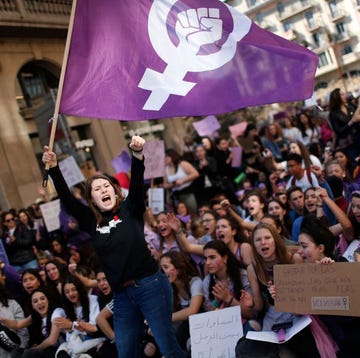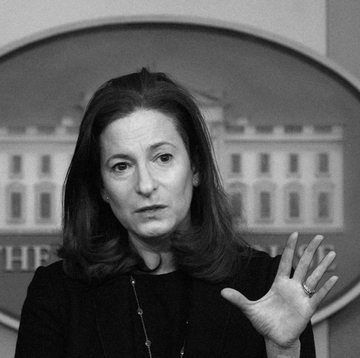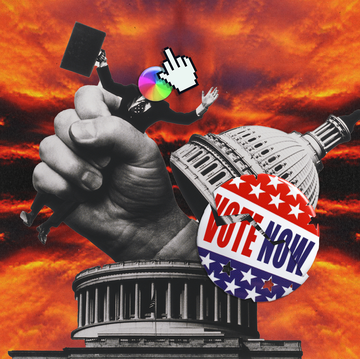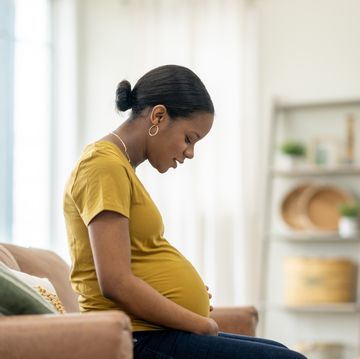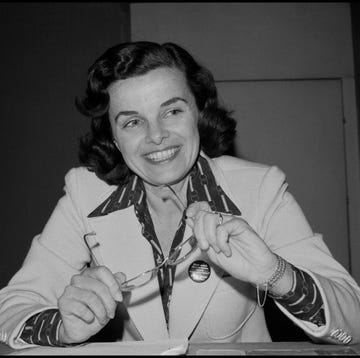Another elbow is headed straight for my face, when I say, "Excuse me, sir, I am standing here!" and a white man in a business suit says looks down and says, "Oh, I didn't see you."
"Of course you didn't," I mumble under my breath. Just another day of having to inform a random stranger of my presence and another small reminder that life as a woman of color can often feel like you're standing right in front of people without being seen. I used to say to my friends, "One day I want to become famous enough that if I go ever missing, someone will look for me."
On a small scale, these everydaymicroagressions — verbal or nonverbal slights or insults that communicate hostile messages to people based on their membership in a marginalized group — are exhausting. On a large scale, though, this erasure of black women and the challenges they face, from the public's consciousness and media landscape, reinforces the hierarchy of which lives have value or matter.
All year, we've witnessed America's transformation around issues of police violence. #BlackLivesMatter has swept the nation, with chapters in cities nationwide, and presidential hopefuls are now required to actually have adequate policy responses to issues of racism and police brutality. Even the president is talking more openly about racism. Yet it still feels like something major is missing from the conversation: Women of color are dying at the hands of the police too, and yet their names often don't rise to the level of a breaking news chyron. The exclusion of their stories from the larger narrative of police violence leaves the impression that it's not an issue for women of color too.
Women of color, like me, are often deemed invisible in real and consequential ways — sometimes when we move throughout the world, like when I was invisible to a man with unwieldy elbows, but more important, we are often invisible to the mainstream media. Men of color are often in a state of hyper visibility, where they are both targets of brutality and sensational media attention. Perhaps this is because it's not hard for the mainstream media and the public to understand that implicit biases create a world where black men are often seen as physically threatening, even when they arecarrying Skittles orare a 12-year-old boy with a toy gun. And while white women are dealing with everyday sexism — including catcalling, intimate partner violence, and sexual assault — women of color must contend with these issues as well as issues of racism. And yet our pain, our death, and the brutality we face often goes unseen, and our tragedies are considered situational and singular instead of as an issue for women of color as a whole.
Black men killed at the hands of police or vigilantes have become household names, like Trayvon Martin, Michael Brown, Freddie Gray, and Eric Garner, rightly generating public protests across the nation and gathering media attention, shining a spotlight on a problem we've largely ignored for far too long. However, the police killing ofRekia Boyd, an unarmed woman who was fatally shot by Chicago PD in 2012 (the officer was later acquitted of manslaughter charges) doesn't generate the same level of national attention or media airtime.
In fact, since the beginning of 2015, several black women have been killed by the police and their stories haven't made headlines in nearly the same way. In Baltimore, the death of Freddie Gray sparked national outrage and another wave of protests. But shortly after Gray's death,Mya Hall, a black trans woman, was also killed by police in Baltimore. (The deaths of trans women of color is alsoan underreported issue.) And in March, a 26-year-old mother of three in California namedMeagan Hockaday was fatally shot by police a mere 20 seconds after they responded to a domestic disturbance call.
In June, a cell phone video of 15-year-oldDajerria Becton being thrown to the ground by McKinney police officer Eric Casebolt spread across the web. While many mainstream outlets completely obscured her identity by referring to her as a "bikini-clad teen," some did appear to turnto discuss the way police violence impacts women of color — and it did look like the media might take a moment to care about people who aren't men and women who aren't white. Instead, Fox News' Megyn Kelly appeared to criticize Dajerria for her role in the assault, saying she was "no saint either," andCNN's Ashleigh Banfield told the president of the Texas NAACP, "I'm not sure where the racial issue comes in, other than the fact that she happens to be black."
Then Rachel Dolezal happened. And the media launched a thousand debates over so-called "transracial" identity, subsuming any discussion about women of color who are still being beaten and killed at such high rates that homicide is thesecond leading cause of death for black women ages 18 to 24. Instead of having a conversation about which lives matter and have value, we started debating Dolezal's hairstyle choices and what race she feels like. And while it's not surprising that the 24-hour news cycle moved on to the next story — or that the country would be intrigued by a former NAACP leader who was born white but identifies as black — for every segment about Rachel Dolezal, that's one fewer segment about girls of color who are suffering epidemic levels of police violence too.
"There's so much going on with black women that we don't get a chance to speak about in the media, but a white woman poses as a black woman and she gets more ink," Columbia Law professor Kimberle Crenshaw says. "You really can't come up with a better example about the irrelevance of black women when the fact that they only come onto the stage when it turns out they're not really black. If Rachel had never been exposed as not a black woman, she'd still be in obscurity just like the rest of us. How dramatic of a statement is that?"
This erasure by the media and in our collective consciousness happens despite the fact that black women are at the forefront of the movements to fight against racism and violence in the name of men and boys of color.Bree Newsome became a hero to many last month, as she scaled a 30-foot flagpole to remove the Confederate flag from the South Carolina Capitol grounds. Three black women, Alicia Garza, Patrisse Cullers, and Opal Tometi, created the hashtag#BlackLivesMatter. And in May, the African American Policy Forum (AAFP) released a report#SayHerName: Resisting Police Brutality Against Black Women, documenting the ways in which women of color are victims of racist police violence like their male counterparts and how their stories are not rising to the public's consciousness. "We've been talking about racist police violence and racist violence more broadly, as though it only impacts bodies that are male," says Crenshaw, who founded AAFP in 1996 "There are thousands of us who have been laid in our graves because we are black but in addition to being killed and abused, our memories are further abused by being relegated to irrelevance."
When women and girls of color are absent from media dialogues about the police brutality and racism, they are excluded from conversations around policy-making to curb racist violence. Instead of approaching policy-making through an intersectional lens, "we categorize these issues as patriarchy or racism or homophobia," and this division creates a hierarchy, "where some women's bodies are valued more than others, and some raced bodies are valued more than others," University of Pennsylvaniaprofessor Salamishah Tillet says. "Black women are then lost, discarded, and ignored despite the fact that they are the group that is so significant in terms of electoral politics, in terms of consumer buying power, in terms of cultural innovation. It's not just about forgetting their names, it's about the fact that women of color are left out of policy initiatives meant to tackle racial justice." Even the president's well-meaning My Brother's Keeper initiativehas been critiqued asnot being inclusive of the needs of girls of color. It's as if some policymakers think racism impacts boys of color but not their sisters in the same households, schools, and neighborhoods.
"[Stories like] McKinney are a minor blip because the media doesn't really know how to situate black women as subjects and representatives of racism," Crenshaw says. "Some part of it is when you throw being gendered as female into the mix, people don't have a relevant frame for understanding that to be a site of racism. They don't get it." And so instead of being a story about police brutality against a black person, like the other cases that have garnered media attention, McKinney instead becomes a story about a bikini-clad teen at a pool party that got out of hand.
We need to learn to see the black women around us whether they are standing next to us in line or experiencing violence at the hands of police or racist vigilantes. This erasure is not just harmful to the individual women of color whose stories are being ignored, Tillet says, "it's harmful to democracy itself," Women of color are so consequential in terms of politics, culture, andbuying power that the spectrum of their full lives, including their victimization, should be a priority instead of just an afterthought.
Follow Zerlina on Twitter.

Zerlina Maxwell is a former Hillary Clinton campaign staffer, and current Director of Progressive Programming at Sirius XM Radio.


